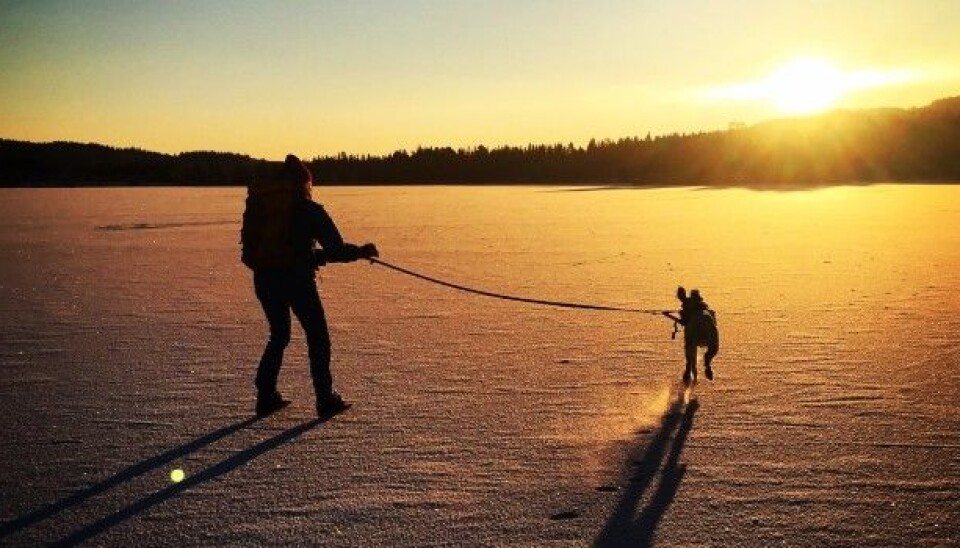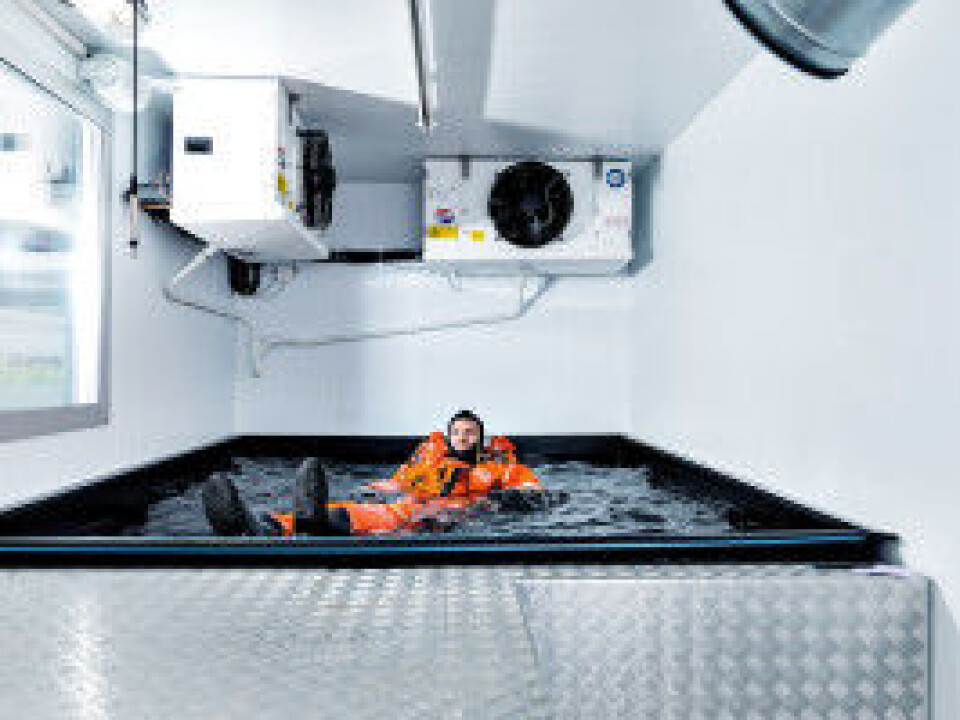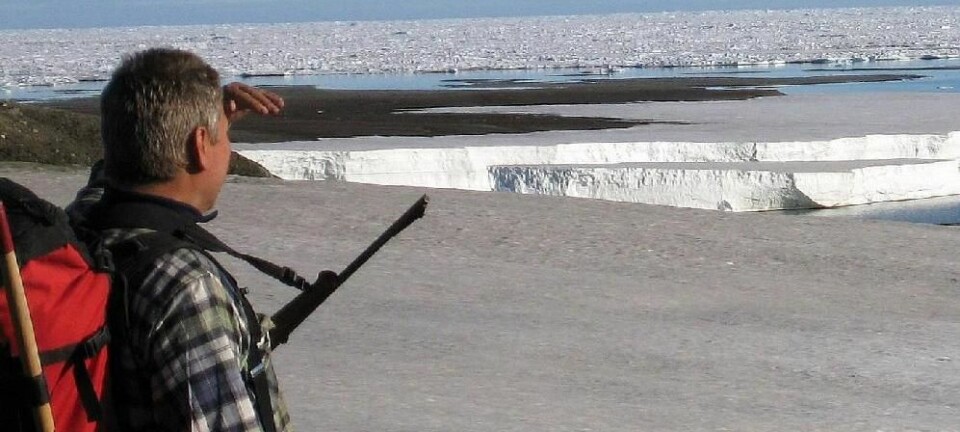An article from Norwegian SciTech News at SINTEF

Skaters – mind the ice!
Recent winters almost free of snow have encouraged Norwegians to get their skates on and venture out onto the frozen lakes. But what happens to your body if you fall through the ice, and what should you do if an accident occurs?
After supervising a series of experiments at SINTEF’s occupational physiology lab, researcher and physiologist Maria Suong Tjønnås knows pretty much everything there is to know about how the human body reacts under extreme temperatures.
Several hundred subjects have voluntarily let themselves be exposed to cooling, wind, exhaustion and fine motor exercises in extreme cold to provide the researchers with real physiological data that they can apply in their further research.
So Maria is the right one to ask. What happens to your body if you fall through the ice while skating on a frozen lake? And how long do you have before your life is in real danger?
“The first thing that happens is that the body is subjected to a cold shock”, says Tjønnås. “Water transports heat away from the body 25 times faster than air. That’s why four degrees in the water feels completely different from four degrees in air”, she explains.

“Cold shock can be extremely dangerous. It’s common during the first 30 seconds for people to experience rapid and uncontrollable breathing. This makes it difficult to hold your breath and so increases the chances of swallowing water. You may drown if you hyperventilate like this for several minutes. But if you can manage to keep calm, this could save your life”, says Tjønnås.
Cold shock also results in a sudden narrowing of the capillaries in the skin, and a significant increase in heartbeat frequency and blood pressure. This may place major stresses on the heart and lungs, and may also result in a heart attack or stroke. In the worst case it can lead to drowning.
Those critical first minutes
If you manage to get through the first two or three minutes, your chances of survival will increase.
“More people drown than die of over-cooling or so-called hypothermia”, says Tjønnås. “This occurs when your body temperature falls below 35°C”, she says.
“I you can’t manage to get out of the cold water, kick and squirm as little as possible and roll up into a ball to reduce heat loss from your body surface. Try to retain your composure and keep as still as you can while you wait for help. Your body must save energy, and the more you wriggle about, the more heat you will lose”, says Tjønnås.
After a few minutes, the body will begin to shake and shiver vigorously.
“Muscle shivering acts as the body’s “emergency generator”, and is essential if the body is to maintain its temperature”, she says.
“If your core temperature continues to fall you will gradually experience physical exhaustion and mental disorientation. This is displayed in a lack of mental coordination, poor fine motor skills and slurred speech, accompanied by disorientation and indifference. This can lead to irrational behaviour and poor judgement just when you are in a critical situation and fighting for your survival.
If you don’t get help or get out of the water relatively quickly, it won’t take long before the body becomes so cooled that it will be difficult to stay afloat”, says Tjønnås.
“This happens because your muscles stiffen and you lose the feeling in your arms and legs. This is why it is very important to carry equipment that can keep you afloat”, she says.
Good advice from a physiologist
So Tjønnås’ practical advice to all those keen to be out on the ice is to pack dry clothes in a waterproof bag with a closing device such as those used by hikers. You can buy these at any sports retailers. Stuff this into your rucksack and it will act as a life-saving float.
You can also change into the dry clothes when you get out of the water. According to Tjønnås, both of these can save your life, while at the same time reminding us that it is always important to be well prepared when it comes to safety.
Even if the ice is safe over the greater part of a lake, there may be areas where it is not. Mandatory safety equipment includes spikes, a heaving line and a whistle. Never venture out alone, and listen to the advice of skaters who are familiar with local conditions. Wear wool against the skin since this will insulate you even if it becomes wet.
-------------------------------------
Read the Norwegian version of this article at forskning.no


































